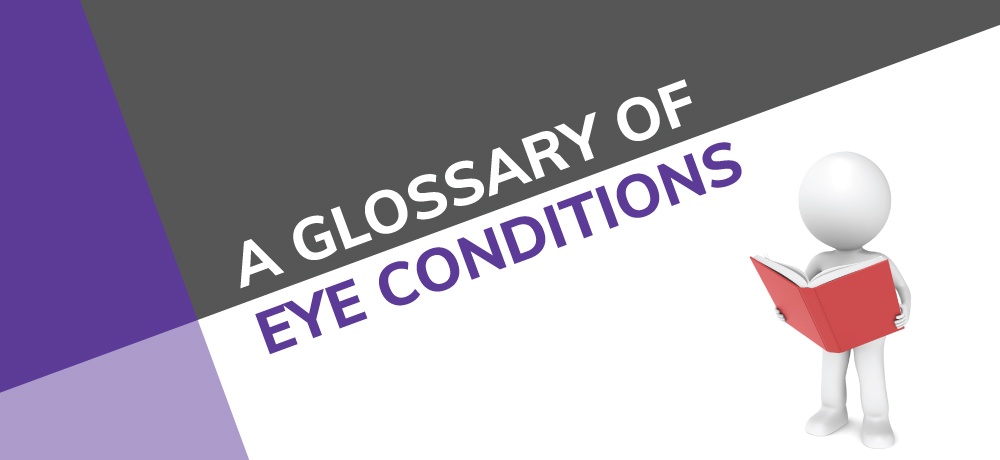A Glossary of Eye Conditions

Every industry has its own language and terms. These words and phrases can be confusing to anyone who is not part of the daily operations of a specific industry, and the optometry field is no exception.
To help you understand the regularly used eye and vision conditions, we’ve created this handy reference guide. Here you’ll find valuable information allowing you to comprehend and communicate your eye care needs.
Amblyopia.
Amblyopia is also known as “lazy eye.” It is a condition where vision in one eye is decreased, leading to the other eye being used as the dominant eye. The condition starts during childhood and can be successfully treated if detected early.
Astigmatism.
When differences in the curvatures of the cornea or the crystalline lens prevent the eye from focusing the image (light) uniformly to one spot, it is termed as astigmatism. It typically results in blurred vision or eye strain.
Cataract.
In a normal eye, the crystalline lens is almost transparent. Aging, injury, or disease can cause the lens to lose its clarity (becomes cloudy) which makes it hard for light to pass through and causes a blur in vision. This cloudy area that forms in the lens of the eye is known as a cataract.
Dry Eye Syndrome.
It’s one of the most common eye conditions treated by eye care professionals. The usual presentation is itchy, burning, and redness, caused by the breakdown in the tear film that lubricates the eye. Aging, heat or air conditioning, certain medication and irritants can all increase dryness of the eye.
Macular Degeneration.
The deterioration of the macula is a part of the eye responsible for sharp, clear vision. This can be due to age, disease, or injury, and can lead to vision loss. Macular Degeneration is also known as AMD, and it’s the leading cause of blindness. It is common among seniors who are sixty-five years of age and older.
Floaters and Spots.
Tiny specks or dots moving in your field of vision are most noticeable in bright light conditions. These are clumps or cells in the vitreous ‒ the clear, jelly-like fluid inside the eye. Aging and eye injury can cause the breakdown of the vitreous, resulting in the floaters. Contact your eye care professional if you notice an increase in the number of floaters you see.
Glaucoma.
Glaucoma is a sight-threatening condition that can be prevented if detected early. A loss of nerve fiber leading to loss of vision is treatable by medication or surgery.
Hyperopia.
Hyperopia, also known as “farsightedness,” is a condition where people tend to see distant objects more clearly than those that are near.
Myopia.
Myopia, commonly known as “nearsightedness,” is a condition where distant objects appear less clear than the objects up close.
Presbyopia.
It is a condition in which the aging crystalline lens loses the ability to change shape to focus light at all distances, especially up close. The symptoms include eyestrain, headaches, and difficulty with reading.
If you’re looking for professional optometrists in Richmond Hill, Ontario, reach out to Dr. Vanessa Luong opt. Prof. Corp. We have been providing comprehensive family optometric care to patients in Markham, Richmond Hill, Thornhill, Vaughan, and surrounding communities for over twenty years. To view our full list of services, please click here. If you have any questions about eye conditions or how we can help you, get in touch with us here.